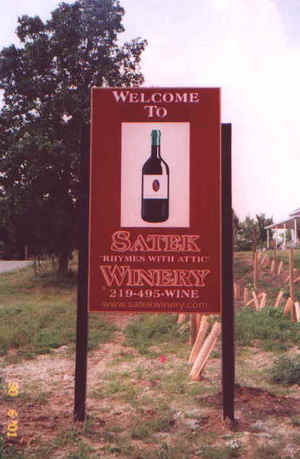Although misogyny is often appropriately named as a motivation for the prevalence of witchcraft accusations in early modern Europe, other significant factors contributed to the movement. It is impossible to ignore the fact that the reforming churches’ emphasis on Christian purity led to the development of extreme anti-witchcraft attitudes and behaviors among laypeople. Additionally, Europe’s economic competition sparked disputes and bitterness that led to witchcraft accusations. One of the main factors was the increased knowledge of demonology that caused people to fear demons, witches and their actions.
Christian philosophers and theologians formulated new opinions about the most significant and revealing characteristics of witches in the late Middle Ages. Up to that point, a witch was an independent person who accomplished evil deeds through magic. Theologians in the Middle Ages began to believe that the devil played a role in witchcraft. This explanation required the person to have a unique association with the devil.This caused witches to be viewed as human agents of the devil, used by him to accomplish what he wanted in the human world.
This demonological view of witchcraft became more thoroughly developed over time and broke into the public consciousness through published texts. Around this time in history, educated people exhibited more curiously and interest in the natural world. Those who discussed such things questioned whether witchcraft and the actions frequently attributed to witches and demons were plausible. Many wondered if those events could truly happen within the natural world.
In early modern Europe, witchcraft was generally not considered to be a part of the supernatural world or the occult. Demonology was considered by many to be a very real component of the natural world. It was often assumed that the related actions of witchcraft were real and complied with the laws of nature. There was a general fear of antagonism from deviant and magical sources that was influenced by both the cultural and religious spheres of early modern Europe.
As ideas of demonology became more widespread, witchcraft began to pose a threat to Protestant and Catholic communities alike. Witchcraft and the power of the devil undermined God’s power. The influence of religion on witchcraft persecutions was essential and the pervasive European ideas of witchcraft would have been nonexistent without the influence of religious principles. Writers used the Christian religion as a basis for their explanations witchcraft and the workings of the devil.
Many books criticizing witchcraft were written by clergymen or others who held positions of religious authority with the intention of influencing the behavior of their respective congregations1. These books were often an attempt to control the behavior of the congregation. Those in positions of power within the church were able to pressure their followers to more closely adhere to Christian ideals by making them aware of the evils and consequences of witchcraft.
Both Protestant and Catholic churches were being restructured and the religious lives of most laypeople were being more closely monitored by church officials and there
was more pressure to adhere to the Church’s standards of what it meant to be a good Christian. At the same time, the realm of witchcraft was constantly related to the devil. This stronger emphasis on religious and moral purity bolstered anti-witchcraft sentiments.
To those concerned with the religious implications, witchcraft was a disturbance to the preferred order of the world. Witches were portrayed as doing things backwards, such as eating with their left hands or desecrating Christian symbols. The portrayal of witches also upturned the idea of a good Christian woman. Rather than being pious, subservient and of course married, witches were portrayed as being autonomous, antagonistic and freely sexual. Belief in this type of description undoubtedly contributed to extensive contempt and fear of witchcraft among both church officials and laypeople.
Additional books spread knowledge of demonology further. In the fifteenth century, books fitting into the “devil genre” were printed hundreds of thousands of times. These books no doubt influenced immense numbers of people and contributed to a greater sense of demonology in the world.
In many areas, demonology and religious thoughts overlapped with misogynistic ideas. Demonic actions were recounted in clear contrast with divine actions while the terrible habits of female witches were contrasted with the moral and upright actions of their male peers.
Although people of both sexes and various ages were persecuted for witchcraft, misogyny and social hostility towards women is still a significant reason for the accusations. Women were widely believed to be morally weaker than men and therefore
far more likely to surrender to the devil. Also, women were usually closer to unpleasant and accident-prone areas of life where misfortune was likely such as childbirth or illness. They were often held responsible for mishaps that occurred when no other explanation was apparent, such as when food became spoiled or animals died inexplicably.
No matter how virtuous a woman appeared outwardly, she was still a potential witch in the eyes of demonologists because of her supposed nature as a woman. Women had less political and economic power than men, so people generally assumed that women were more likely to seek out the devil’s support to attain such status.
Because women often married at a young age and the life expectancy was higher for women than men, it was likely that a woman would spend significant time in her life as a widow. Widows or unmarried women who were unprotected by a man were especially likely to be accused.They lacked the guidance of a male figure and were unmonitored by a man, so it was assumed that they would be particularly vulnerable to giving into the temptations of the devil.
It is also possible that misogyny even on the part of women themselves played a part. It is likely that male-created standards for women’s behavior were internalized by women and encouraged them to join in on the accusations and attacks. Women could gain economic or social security by exemplifying the ideal of a respectable wife and mother. They could also gain this respect by accusing women who departed from this standard. Accusations of witchcraft often came from primarily female settings and expressed women’s fears and insecurities about themselves and their place in life, as well
as their economic status.
Europe’s economic situation also played into the prevalence of witchcraft accusations. The rapidly expanding population created a struggle among people for limited resources such as land and food. There was a group of landless people that relied on charity and many accused witches were included in this group.
Some valued their reputation as witches and did nothing to refute the rumors. They were able to make a living because other people were afraid of refusing them. The supposed witches were able to support themselves by intimidating and extorting those who believed they had frightening magical powers.
In medieval times, giving assistance to the poor was thought of as a duty of good
Christians, but acts of charity declined with the new sense of economic competition. Legislation was also passed under Elizabeth I that scorned begging as a vocation and discouraged both beggars and those who provided them with charity.
Those who were refused charity could take out their frustrations by cursing the person who refused them. Although the cursed person may feel guilty about not being able to fulfill their Christian responsibility of assisting the needy, they could clear their conscience and make the beggar appear completely undeserving by blaming an unrelated misfortune on the beggar’s acts of witchcraft.
There is no outstanding factor that accounts for the witch hunts that occurred in the Middle Ages. A combination of thinking that leaned towards a belief in demonology, the actions of religious reformers, economic changes and misogyny all contributed to the persecution of witches in early modern Europe.
References:
Merry E. Wiesner, Women and Gender in Early Modern Europe (New York, 1993) 223-229.
Merry E. Wiesner, Witchcraft in Early Modern Europe (Boston, 2007) 1-6.



